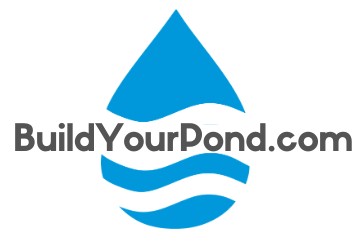Description Contemporary LED lit waterfall ponds use LED lights to illuminate the water features at night, offering brilliant colors or soft white lights. Synchronizing lights to music can create choreographed displays, adding a modern touch to your garden.
Planning and Design
- Choosing the Location:
- Visibility: Choose a location that is easily visible from your main living areas, such as patios or living room windows.
- Electrical Access: Ensure the location has access to electrical outlets for the LED lights and pump.
- Designing the Waterfall:
- Sketch the Layout: Draw a detailed plan, including the pond shape, waterfall, LED light placements, and plant arrangements.
- Lighting Effects: Plan where to place the LED lights to highlight the waterfall and surrounding features.
- Regulations and Permits:
- Local Codes: Verify any local regulations or permits required for installing water features and electrical components.
Materials and Tools Needed
- Materials:
- Pond Liner: Use a durable EPDM rubber liner to prevent leaks.
- Underlayment: Protects the liner from punctures.
- Waterfall Spillway: A preformed spillway ensures a smooth flow of water.
- Pump: Choose a pump rated for continuous use and sized appropriately for the waterfall.
- PVC Pipe and Fittings: For connecting the pump to the spillway.
- Rocks and Gravel: For lining the pond and creating a natural look.
- LED Lights: Waterproof, submersible LED lights, preferably programmable with color-changing capabilities.
- Control System: A remote or app-controlled system for managing the lights.
- Tools:
- Shovels and Rakes: For digging and shaping the pond and waterfall.
- Level: Ensures the waterfall and pond are properly graded.
- Utility Knife: For cutting the liner and underlayment.
- Electrical Tools: For installing the lighting and connecting it to the power source.
Building the Waterfall
- Marking the Area:
- Outline the Shape: Use a garden hose or rope to outline the pond and waterfall shape on the ground.
- Excavation:
- Dig the Pond: Dig the pond to the desired depth, creating shelves for plants if needed.
- Shape the Waterfall: Excavate the area for the waterfall, ensuring a smooth gradient for the water flow.
- Installing the Liner and Underlayment:
- Lay the Underlayment: Place the underlayment in the excavated areas to protect the liner.
- Install the Liner: Lay the liner over the pond and waterfall, smoothing out any wrinkles.
- Waterfall Spillway:
- Position the Spillway: Place the waterfall spillway at the top of the slope, ensuring it is level for an even water flow.
Adding Water and Equipment
- Filling with Water:
- Initial Fill: Slowly fill the pond with water, adjusting the liner as needed.
- Installing the Pump and Plumbing:
- Pump Placement: Place the pump in the deepest part of the pond. Connect it to the waterfall spillway using PVC pipe.
- Secure Connections: Ensure all connections are tight to prevent leaks.
- Installing LED Lights:
- Placement: Position the LED lights around the pond and waterfall. Submerge some lights to illuminate the water from below and place others to highlight the waterfall and surrounding plants.
- Wiring: Connect the lights to the control system and ensure all wiring is waterproofed and safely routed.
- Testing the System:
- Run the Pump and Lights: Turn on the pump and lights to check for proper water flow and lighting effects. Adjust as needed.
Landscaping and Decoration
- Rocks and Gravel:
- Natural Look: Line the pond and waterfall with rocks and gravel to secure the liner and create a natural appearance.
- Planting:
- Aquatic Plants: Add a variety of aquatic plants like water lilies, irises, and ferns to enhance the pond’s ecosystem and aesthetic.
- Additional Lighting:
- Ambient Lighting: Consider adding additional ambient lighting around the pond area for enhanced nighttime visibility and effect.
Maintenance Tips
- Regular Cleaning:
- Debris Removal: Regularly remove leaves and debris from the pond to prevent buildup.
- Filter Cleaning: Clean the pump filter as needed to ensure optimal water flow.
- Water Quality:
- Regular Testing: Test the water quality periodically to ensure a healthy environment for plants and fish.
- Water Additives: Use water additives to prevent algae growth and maintain clear water.
- LED Light Maintenance:
- Check Connections: Regularly check the electrical connections to ensure they are secure and waterproof.
- Adjust Settings: Use the control system to adjust lighting effects as desired.
Estimated Costs
- Installation Costs: Typically range from $5,000 to $20,000, depending on the size, complexity, and type of lighting system used.
